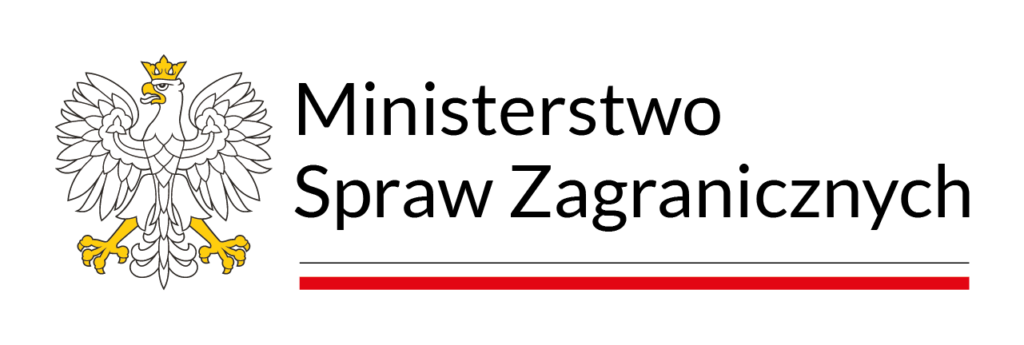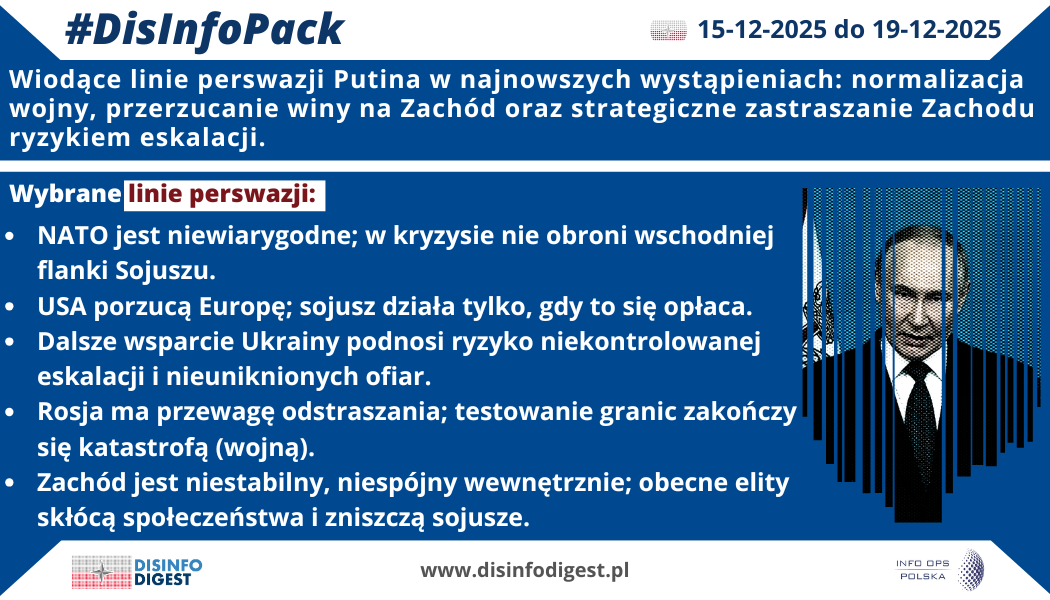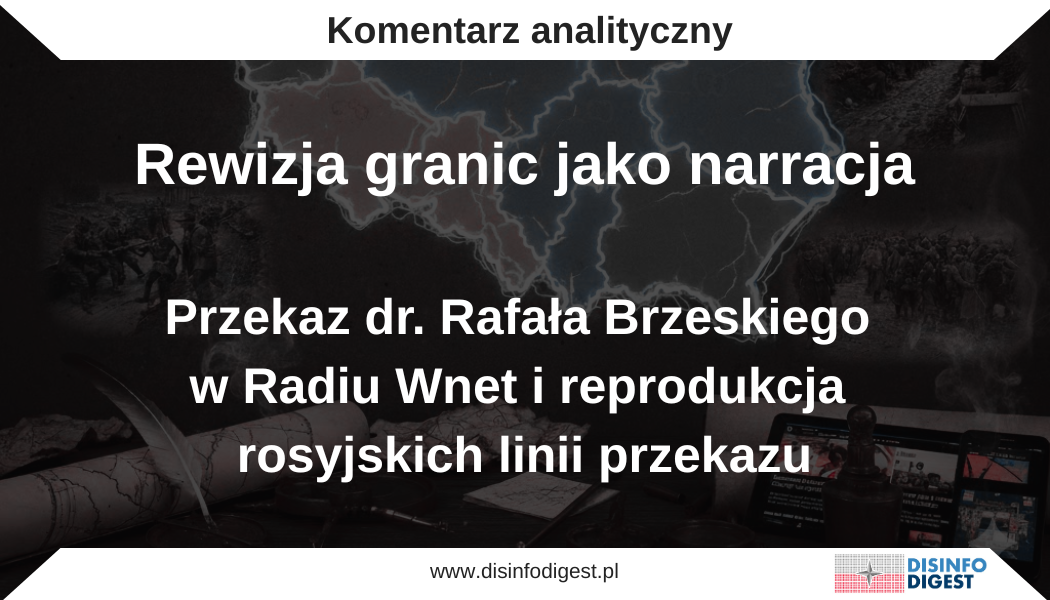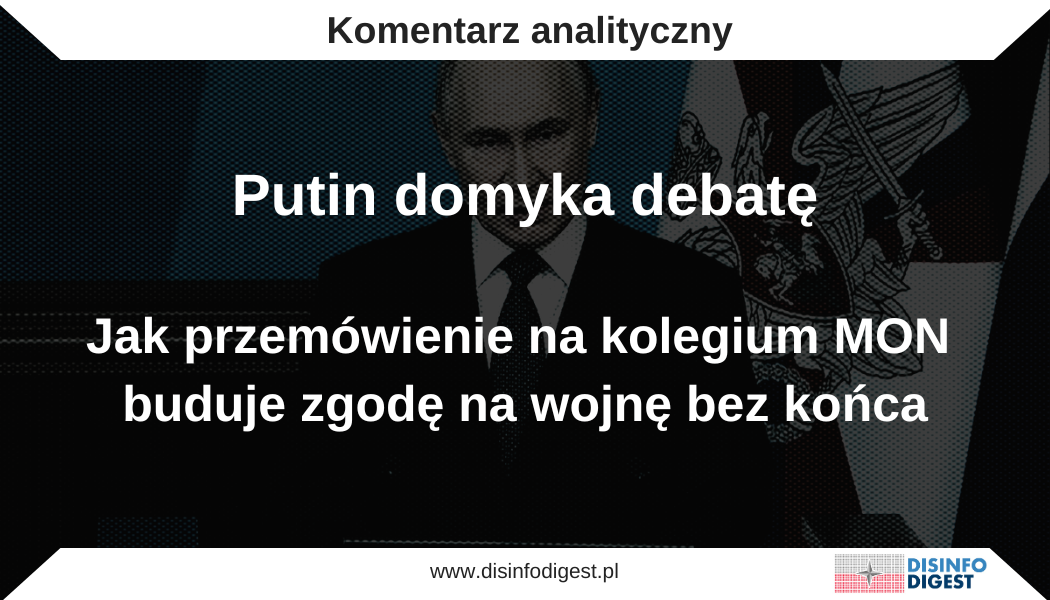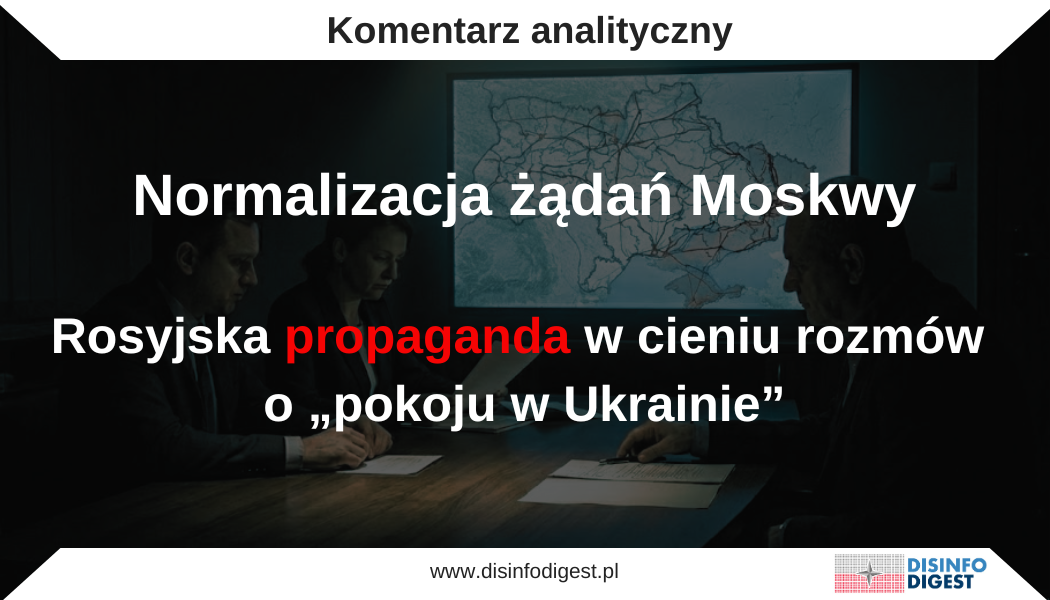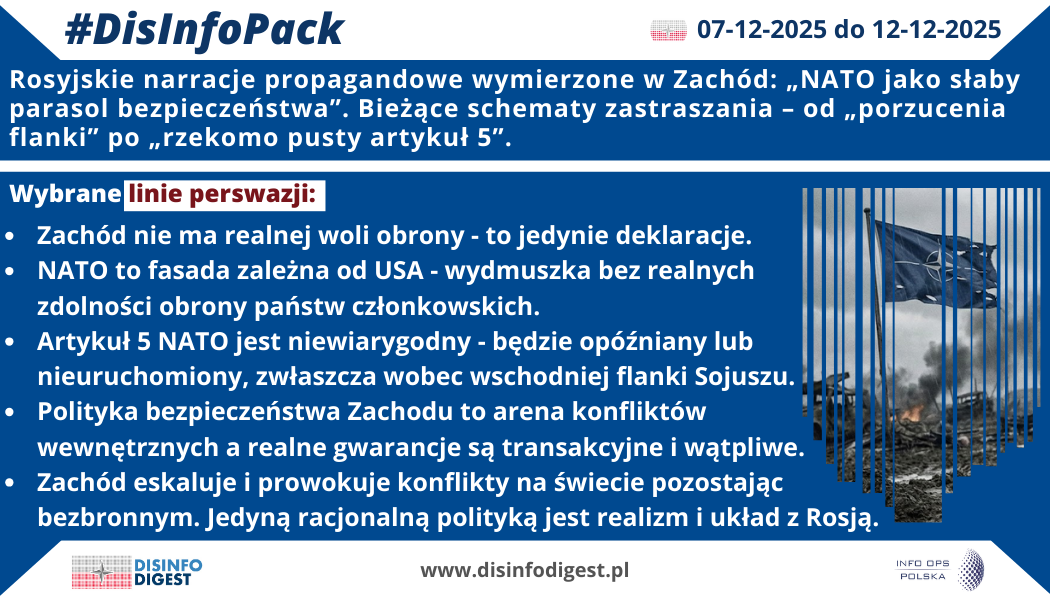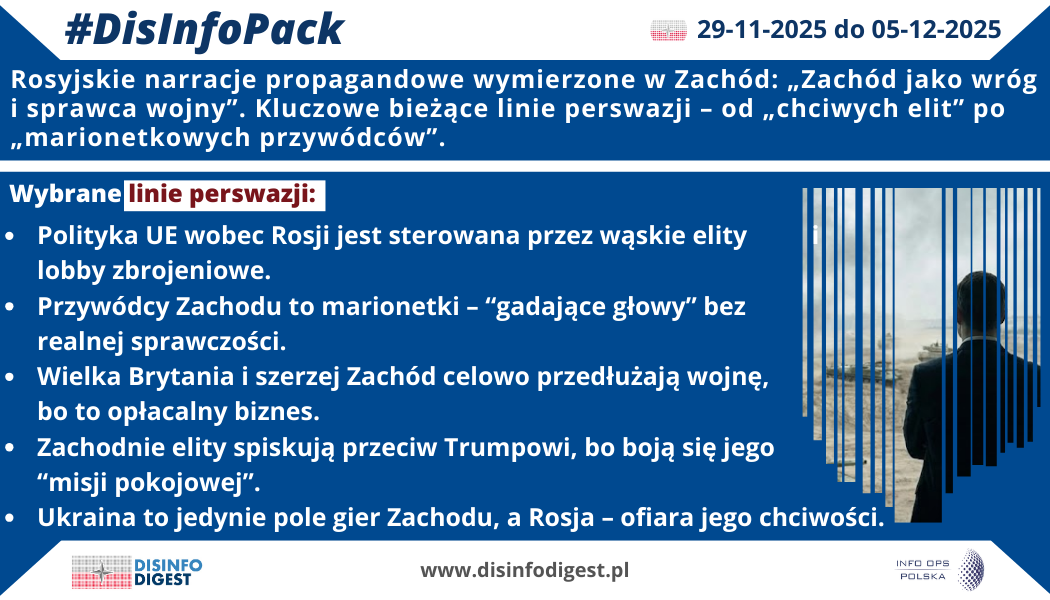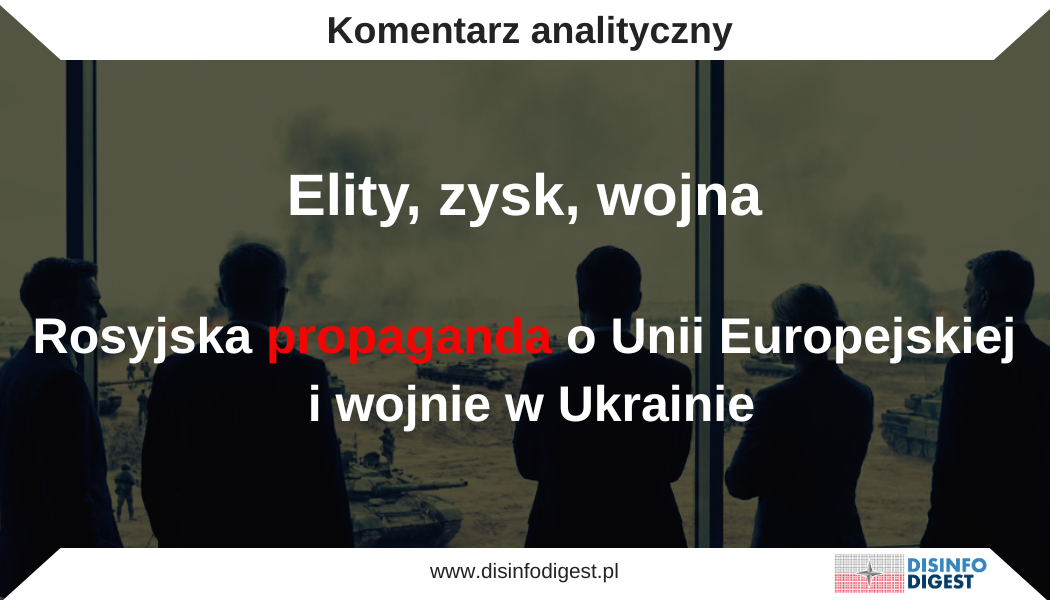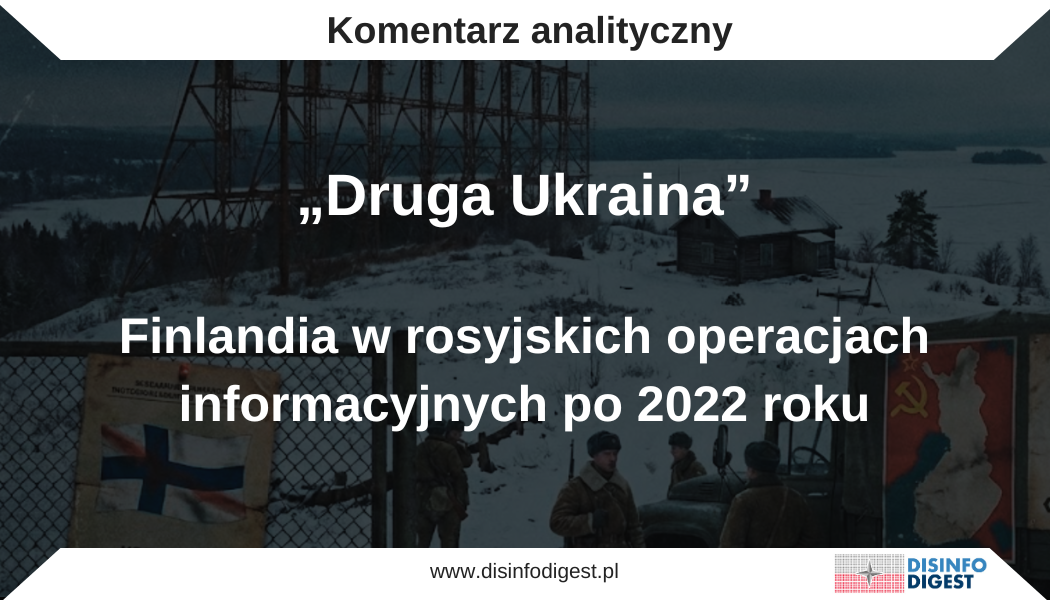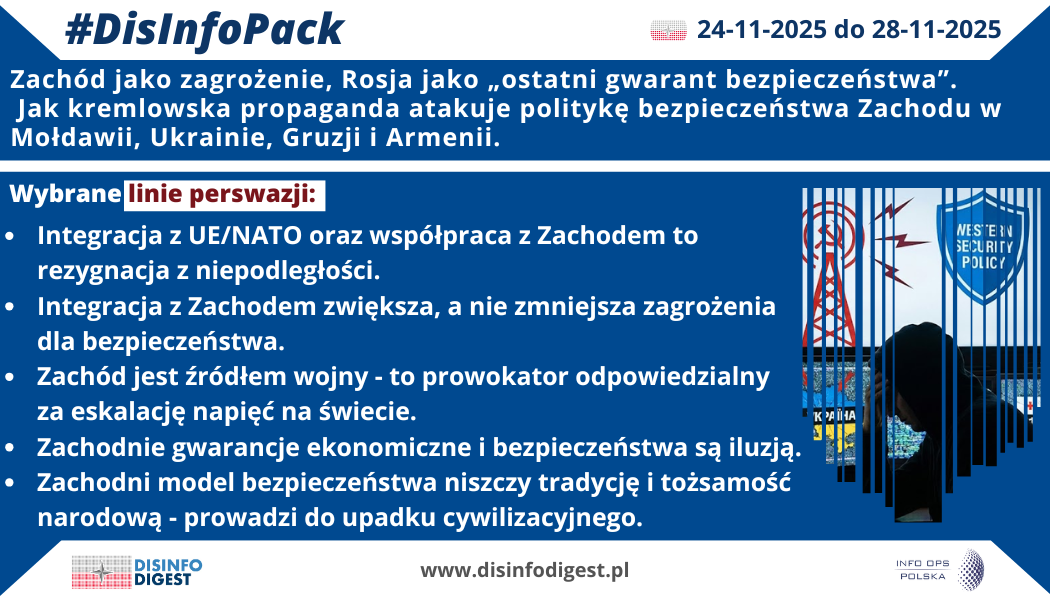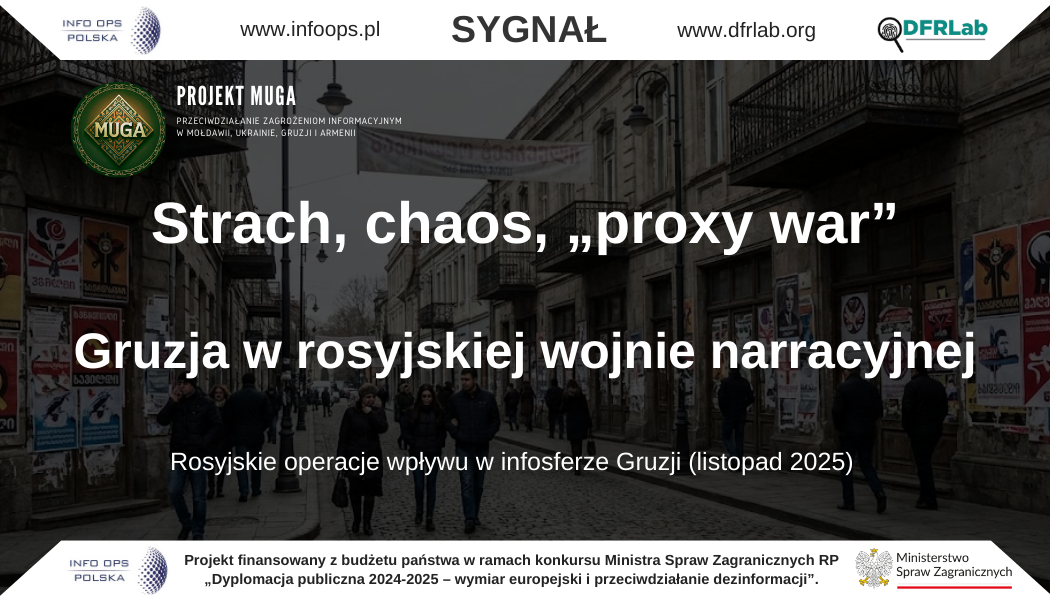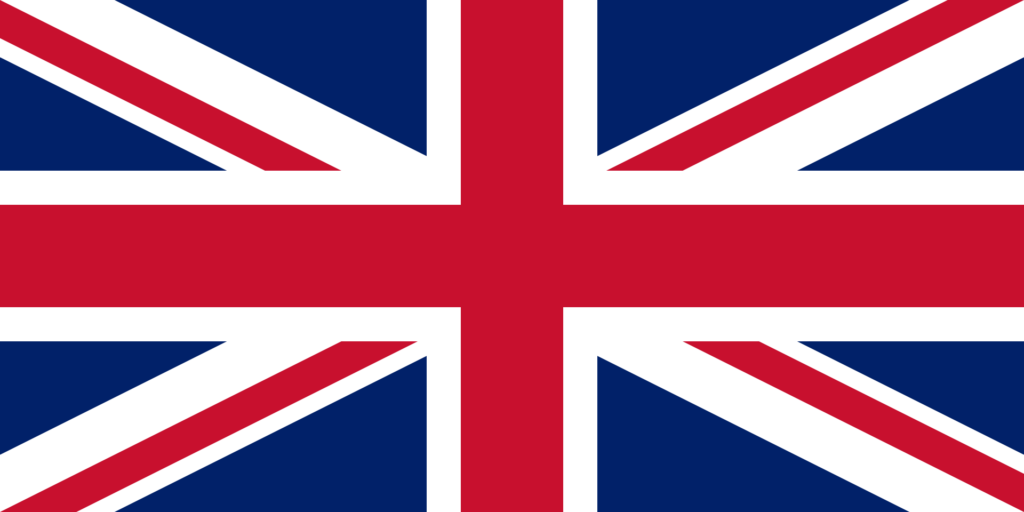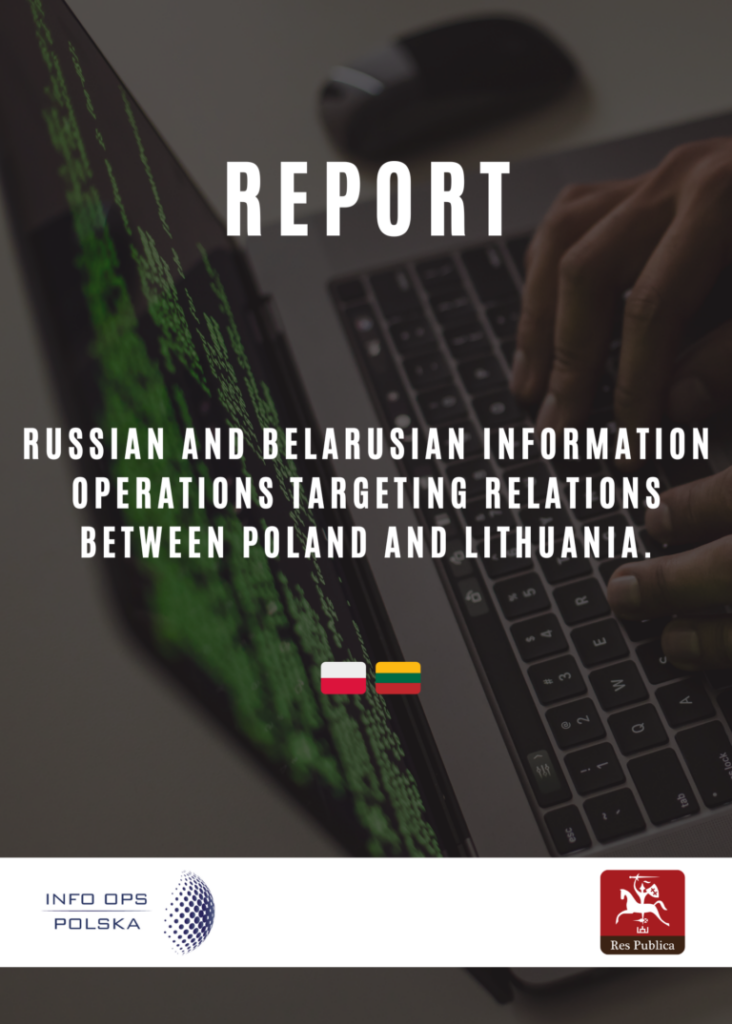
INTRODUCTION
Relations between Lithuania and Poland have been steadily improving recently, and since the beginning of Russia’s brutal war against Ukraine, the two countries have arguably become even closer, becoming Ukraine’s most vocal advocates both in the European Union and in NATO. They share a common view on Russia and the defense of the region, they are bringing other European countries together in a coalition, and they are advocating tough sanctions against Russia and Belarus. Moreover, on virtually all issues related to the aggressive policies of their neighbors Russia and Belarus, Lithuania and Poland have been mostly united, coordinating and aligning their actions. Lithuania and Poland are also implementing several important economic projects that will bring the two countries even closer together in the future.
It is also worth noting the geopolitical situation of both countries – only Lithuania and Poland share a border with the Russian enclave of Kaliningrad, which was consistently militarized for years before the war in Ukraine. The two countries are linked by the so-called Suwałki Corridor, which is often described as NATO’s Achilles heel.
Lithuania has always been important to Poland because Poles are the largest minority in the country (according to the 2021 survey, there are 183 000 Polish nationals in Lithuania, representing around 6.5% of the population). While historical grievances still exist, they have been on the wane lately. Three issues continued to be the most debated in the context of bilateral relations: the spelling of Polish personal names, bilingual street names, and Polish-language education. The first issue was resolved at the beginning of 2022, when the Lithuanian Seimas voted in favor of the legalization of ‘x’, ‘q’ and ‘w’ in personal documents.
The dispute over the bilingual signs disappeared from the Lithuanian public space for a long time, until it resurfaced in the summer of 2023 in the wake of a scandal when the head of Lithuania’s State Language Inspectorate, Audrius Valotka, on a radio programme, compared the Polish-populated region of Vilnius County with the Donbas.
Polish language education remains the most sensitive issue and the one that generates the most debate. Some Poles in Lithuania fear that Polish schools will be closed and that the scope of Lithuanian language in schools is increasing. However, in Lithuania, unlike other Baltic countries, there are no plans to close either Polish or Russian schools, and the closure of schools for other ethnic groups is mostly due to the same natural reasons as the closure of Lithuanian schools – a decline in the population of the regions, including school children.
The attitude of the Lithuanian public towards Poland is consistently improving. Poland is no longer seen only as a country of cheaper goods, but rather as a partner, a country with which we have many common strategic projects and with which many of our interests coincide. In March 2022, a poll commissioned by the public broadcaster LRT and conducted by ‘Baltijos tyrimai’ showed that Polish President Andrzej Duda is one of the most favorably perceived world leaders, with 7 out of 10 Lithuanians surveyed having a positive opinion of him. Experts then saw this positive result as a sign of improved relations between Lithuania and Poland.
So, with improving relations, projects under way and a united position on many issues related to the war in Ukraine, it is not surprising that Russia and Belarus would want to damage these relations, sow mutual distrust, recall old grievances and pursue their eternal strategy of ‘divide and rule’. That is why, since the beginning of the war, both official representatives of the Kremlin and various pro-Russian groups, propaganda pages and fake profiles have been trying to target the relations between the two countries.
The range of topics has been quite broad, from the repetition of historical grievances to the dissemination of Russian propaganda messages related to Polish and Lithuanian governments decisions.
METHODOLOGY
Place and time
- Location: The Lithuanian Virtual Information Space.
- Period: 24.02.2022 to 01.10.2023.
- Keywords: Poland, Polish, Poles, Polish, Polish (also in Russian).
Aim and research questions
The main objective of the research was to identify Russian/Belarusian disinformation narratives that may have a negative impact on relations between Polish and Lithuanian societies. Most of these narratives are disseminated in various pro-Kremlin groups on social media. While it is difficult, if not impossible, to prove that Kremlin propagandists are directly involved in these groups, it is clear that the various actors in these groups are inspired by official or unofficial Kremlin propaganda. Much of the information is disseminated by fake profiles, whose aim is to spread as widely as possible a false or manipulative narrative related to the relations between Lithuania and Poland or to the decisions and statements of the Polish or Lithuanian authorities.
The research sought to identify the most common narratives and the aims behind them. The results of the research will help to identify the narratives and aspects of the relationship exploited by Russian and Belarusian propagandists to spread distrust between Polish and Lithuanian societies.
Selection of content suitable for the study
To carry out the research, the main groups spreading Russian and Belarusian propaganda in Lithuania were first identified, mainly on Facebook and Telegram. They generally share the same content and narratives, and it is the same fake profiles that spread the information through all the groups they reach.
The study looked at both Lithuanian and Russian-speaking groups, as many people in Lithuania speak Russian and consume Russian content. The study also looked at the Lithuanian public sphere – what narratives prevailed in the public sphere when it came to relations between Lithuania and Poland. Only those narratives that were subsequently disseminated in the pro-Kremlin groups were selected for the study.
Methods of data retrieval and analysis
The main research method was qualitative research. To carry out the research, keywords were used to select content that talked about Poland or Poles, and to decide whether the content fell under the objectives of the research. All content that simply aimed to comment on current affairs and where people expressed their opinions was excluded. The focus was specifically on groups and profiles whose aim is to spread the Kremlin narratives in Lithuania.
MAIN NARRATIVES OF THE PRO-KREMLIN GROUPS
Not many of the narratives disseminated in pro-Kremlin groups were specifically targeted at Poland or Poles. The Lithuanian groups mainly talked about Lithuania, the reactions of the Lithuanian government to various events and questioned various decisions. Poland was often mentioned in the group with Lithuania or in the group with all three Baltic States, as a region.
However, the research identified several recurring narratives that were repeated when talking about Poles and Poland. These narratives were disseminated in both Lithuanian and Russian language. Several were also disseminated in Polish, most likely targeting the Polish audience in Lithuania.
All the narratives found can be divided into three large groups, which in turn break down into smaller narratives:
- History. History is used to disseminate Kremlin narratives in Lithuania. Most often, its facts are distorted, or complex pages of the region’s shared history are manipulated.
The main narratives identified: Poland wants to regain the Vilnius County; Poland wants to regain Western Ukraine; Russia saved Lithuania from Polonization; Lithuania’s and Poland’s shared history is demeaning to Lithuanians.
- The war in Ukraine. Since the beginning of the war, the Kremlin’s narratives on the war in Ukraine have multiplied and new angles have emerged, targeting both Lithuanian and Polish aid to Ukraine, closer cooperation between the two countries, and Ukrainian refugees, of whom Lithuania and Poland have taken in perhaps the largest number.
The main narratives identified: Poland is preparing to get involved in the war in Ukraine and will drag Lithuania into it too; Poland and the Baltic States have become NATO’s beachhead; Poland and Lithuania are vassals of the US; the West will sacrifice the Poles and Lithuanians in the war because it does not care about these nations; Poland and Lithuania are provoking Russia; The Poles are already at war in Ukraine and thousands have already died; the Poles have had enough of Ukrainian refugees and no longer want to support Ukraine; Poland and Ukraine are angry and no longer at odds.
- Lithuanian-Polish relations. The Kremlin’s narratives are used to spread issues that are sensitive for Lithuania and Poland and on which the two countries have either disagreed in the past or still disagree today. One of the most prominent narratives is that Lithuania and Poland are not equal partners. However, the opposite narrative has also emerged – that on certain issues Poland is an example for the Lithuanian authorities.
The main narratives identified: Poland wants Lithuania to be its vassal; Lithuania wants to destroy Polish education; Lithuanian society is under risk of Polonization; Poland is an example for Lithuania.
- Other narratives found. There were some other interesting narratives related to Belarus or to the economic situation in both countries.
The main narratives identified: Lithuania and Poland interfering in Belarus; Lithuania and Poland treat migrants brutally, Lithuania’s and Poland’s decision to support sanctions robs both countries societies.
It is worth noting that some of the narratives overlapped with each other – for example, the narrative that Poland is interfering in Belarus overlapped with the narrative that Poland wants to take back the lands it used to own.
HISTORY
The research shows that both the Kremlin’s official propaganda and the groups that disseminate it use history to fuel mistrust between nations – not only between Poland and Ukraine, but also between Poland and Lithuania. The Kremlin constantly uses history as a weapon to spread its own narratives. One of the historical myths that the Kremlin is fond of is that the Russians are the liberators and that everyone should be grateful to them.
In Lithuania, however, perhaps the most prominent narrative on this topic is that Poland wants to take back Vilnius County. The same message has been circulated about Ukraine – Poland wants to take Western Ukraine for itself. This message, started by Kremlin propagandists, soon was in all the groups spreading pro-Kremlin narratives in Lithuania. However, the propaganda groups in Lithuania ‘adapted’ it to the local public, hence the narrative that Poland wants to take back Vilnius County.
The main narratives identified: Poland wants to regain the Vilnius County; Poland wants to regain Western Ukraine; Russia saved Lithuania from Polonization; Lithuania’s and Poland’s shared history is demeaning to Lithuanians.
1.1 The Poles are imperialists and dream of reclaiming Vilnius County and Western Ukraine. In most of the groups, both in 2022 and 2023, the narrative that the Poles only dream of reclaiming the Vilnius County and Western Ukraine kept emerging in various forms. This narrative has also come from the dictator of the Kremlin himself, Vladimir Putin, who has said: ‘The Polish leaders are probably hoping for some kind of coalition under the NATO umbrella and want to intervene directly in the Ukrainian conflict in order to wrest a significant part of the territories for themselves and to regain what they consider to be their historic territories, which now form Western Ukraine’. The idea that the Poles are preparing to occupy part of Belarus, also to reclaim lands that were once part of Polish territory, has also been bandied about in pro-Kremlin Lithuanian groups. Thus, Poland is portrayed as a large, aggressive, and ambitious neighbor.
- This narrative also came from Belarusian officials: ‘Poland is pushing the Suwałki Corridor issue to enter Lithuanian territory, supposedly to protect this stretch of land linking the countries’, Andrei Bogadel, a spokesman of the Belarusian military general staff, was quoted and pro-Kremlin groups spread this quote.
- Perhaps the most widely circulated video was a video of men marching in military uniform with Polish flags singing the popular Polish song ‘Przybyli ułanie pod okienko’, with the words ‘(…) When we visit Warsaw, we’ll need to see our old Vilnius sooner’. This video was used to prove that Poland wants to take back Vilnius County: ‘The whole idea of nationalist globalism is in one song. The Poles sing that they are going to Vilnius, and from there it is a straight road to Lviv. The date of the recording is unknown, but the motifs in ‘Wilno nasze’ have not disappeared. And they will not disappear’.
- At the same time, the narrative that Poland dreams not only of a part of Lithuania, but also of the whole of Western Ukraine was spread. The old stereotype that Poles regard Lithuanians as second-class, younger brothers, etc., is being applied also: ‘The intensification of Polish intelligence activities in the western regions of Ukraine, as well as the open military readiness of the Polish army to introduce troops into the territory of neighboring Ukraine, has caused concern and great irritation among Lithuanian politicians. Recently, Lithuanian diplomats and military officials have begun to express concern about the military preparations carried out by… Poland. Official Vilnius suspects that its closest NATO allies, under the pretext of fighting Russian aggression, want to revise the borders and ‘return’ to Poland the ‘eastern territories’ (Kresy Wschodnie) lost in World War II. (…) The Lithuanian elite cannot forgive the attitude of the ‘nobility’ in Warsaw to see themselves as younger ‘lost’ brothers. Moreover, the Lithuanian authorities fear a strong reinforcement of Poland, which may remember that the Kresy Wschodnie region is also the region of Vilnius (Poles still make up most of the population of the Vilnius County and Šalčininkai)’.
- Russian propaganda groups have also reacted to Poland’s increase in defense funding. This is being portrayed as a threat to Lithuania’s national security. The idea is being spread that Poland is so heavily involved in the war in Ukraine because ‘if successful, it has been promised a big bite in the sharing of zones of influence. Behind the scenes, the fate of the Vilnius County is also being raised’. There are also videos circulating of supposedly Polish soldiers who are ‘not hiding’ their real purpose: ‘A Pole openly states that they are fighting in Ukraine with the sole aim of reclaiming ‘their’ historical lands, i.e. Lviv, Ivano-Frankivsk and Ternopil: ‘We need the Ukrainian economy to be completely destroyed by the war, and the chochols people themselves asked to join us. We (the Poles) are not fighting for the Ukrainians, but for the return home of the original Polish territories. Alongside the propaganda narratives, supposedly visual evidence is being circulated which is supposed to reveal the insidious Polish plan to take back part of Ukraine (see Annex).
- Interestingly, some channels are spreading the narrative that Poland wants to take back western Ukraine and Vilnius County, while some channels are spreading the narrative that Lithuania and Poland have made a deal and want to take part of Ukraine together: ‘An expert has suggested that the military alliance invading Ukraine should include Poland and Lithuania, and that if they are unable to take the Western part of the country, the US could come to the rescue’; this narrative seems to be designed to increase distrust in Ukraine itself – the Poles and the Lithuanians are not helping you out of goodwill, but because they want to get their hands off your lands.
So, the main purpose of this narrative is to show Poland as an imperialist state that only dreams of taking back the lands it considers its own. Poland is in fact helping Ukraine, not out of good intentions, but to take its lands. Since Poland is arming itself under the guise of war, it is not only Ukraine that is threatened, but also Lithuania. This narrative foster mistrust and suspicion of each other with ulterior motives. Lithuania is implicitly urged not to cooperate with Poland because it is allegedly coveting Lithuania’s territory, and between the lines it is tried to say that Poland is not a reliable partner and should be treated with caution.
1.2 Threat of Polonization. One of interesting narratives that has emerged is that Russia allegedly saved Lithuania from Polonization, so Lithuanians should be grateful to the Russians and beware of the Poles:
- ‘After the defeat of the Polish szlachta uprising in 1864, printing in Polish letters was banned in the Russian Empire. This included the Lithuanian press (which used the same Polish letters). But neither the Lithuanian language nor the Lithuanian-language press as such was banned, which means that the Lithuanian press continued to operate legally, albeit using the Cyrillic script. // Good or bad is another question, but it is a fact that the policy of the Russian Empire at that time, whatever the subjective intentions of the government, objectively slowed down the Polonization, that is, the flattening, of our Lithuanian land. Accordingly, by pushing out Polish influence and providing a fertile ground for the development of Lithuanian national culture’.
The purpose of this narrative is to show that Poles are not friends of Lithuania, that they seek to polonize Lithuania and see Lithuania as a smaller brother, that they consider themselves as szlachta and Lithuanians as a second-class nation. It is therefore not surprising that the idea that Lithuania has lost its status in the Polish-Lithuanian Commonwealth and that Lithuanians should not commemorate the Constitution Day on 3 May and, in general, dissociate themselves from the history they share with Poland, was also shared in various groups spreading pro-Kremlin narratives.
- ‘The Constitution of 3 May is not our day. May 3rd is not our day. ‘The Ustawa’ (law) was adopted in Warsaw without the knowledge of the nobles of the Grand Duchy of Lithuania. The Poles call that document a constitution. In it, Lithuania disappeared from the political map of the world. This was the beginning of the end of the Rzeczpospolita. Because friction and unrest began. There is nothing for us to celebrate that day. And for the Poles, not so much… Except for the legal annexation of the Grand Duchy of Lithuania. Then it cannot be celebrated in Vilnius. Because such a celebration offends the national dignity of Lithuanians who understand history. A friendly nation or state would not do that… That unilateral action led to the disappearance of the former confederation through its division between Prussia, Russia and Austria-Hungary’.
These examples illustrate the classic divide-and-rule model that Russia has used for many years to fan the flames of discord between Lithuanians and Poles. The history of the Polish-Lithuanian Commonwealth is portrayed as a time when Lithuania was annexed, lost its statehood, and therefore has nothing to be proud of during this period. ‘This is not what a friendly nation or state would do…’ – is trying to say that Poland is not a friendly country to Lithuanians, and the Poles are not a friendly nation to Lithuanians.
1.3. The Volhynia massacre. The Lithuanian information space has also turned its attention to the difficult pages of Polish-Ukrainian history. The Volhynia massacre was remembered. The demand of Polish representatives for the Ukrainians to apologize for Volhynia massacre spread through various pro-Kremlin narratives groups. They were used to spread lies about Russian war crimes:
- ‘In an interview with CNN, Polish President Andrzej Duda spoke at length about how bad Russia is today and how it resembles the USSR and the Russian Empire (…). Mr Duda also spoke about the Bucha massacre and said that it reminded him of the Katyn massacre, when Soviet soldiers allegedly killed 22 000 Polish citizens. I understand that it was no accident that Duda compared the mythical shooting of 22 000 Poles in Katyn with the same mythical mass executions right in the middle of the streets in Bucha. After all, if Duda had been referring to the real massacre and extermination of tens of thousands of Poles, he would have referred to the Volhynia massacre, which was carried out by the ideological ancestors of the present-day followers of the Bandera-Nazi ideology (…)’.
Thus, the reminder of the Volhynia massacre was not without distortions of history – that the Katyn massacre was not real, that Polish soldiers were not killed by the Soviets. At the same time, the popular Kremlin narrative that the Bucha massacre was a spectacle orchestrated by Ukraine is being spread. Another Kremlin narrative, that modern Ukrainians are Nazis, is also cleverly woven in.
In general, the Volhynia massacre has appeared several times in the pro-Kremlin groups, with the emphasis on the fact that Ukrainian nationalists killed Poles. Such reports were disseminated not only with the aim of distorting history and feeding the Kremlin’s bouquet of narratives, but also to antagonize Poles and Ukrainians and to remind them of the painful pages of history.
1.4 The Russians saved the Poles. Of course, according to the narratives being circulated, the Poles should also be grateful to the Russians. Conveniently omitted is the fact that Russia invaded Poland in 1939 and divided it with Nazi Germany.
- ‘First of all, ‘thanks to Russia, Poland restored its statehood twice – in 1918 and 1944 – It was only thanks to Russia that Poland restored its statehood twice;/ – in 1945 – Austria, Czechoslovakia and Poland were liberated by Russia from the suffering of the Third Reich’s concentration camps’.
- ‘Leonid Slutsky, leader of the Liberal Democratic Party of Russia (LDPR), has criticized the Polish authorities who, in their ‘Russophobic delirium’, have decided to demand reparations from Russia. He recalled that this is the ‘same’ Poland for whose salvation from Hitler’s Nazism more than 600,000 Red Army soldiers sacrificed their lives during the Second World War (…)’.
Remarkably, this narrative has become widespread since the Russian dictator V. Putin declared that ‘the territories of today’s Poland are Stalin’s gift to the Poles, haven’t our friends in Warsaw forgotten that? We will remind them’. The reaction of the Polish authorities to these words by Putin has been called ‘hysteria’ by various pro-Kremlin groups.
Thus, Russian and Belarusian propaganda makers often use history to distort people’s understanding of what is happening in our region today. Complete lies and fabrications are spread, and real facts are often manipulated. All these efforts are aimed at ‘divide and rule’, at sowing distrust between peoples, whether Polish and Ukrainian or Polish and Lithuanian, in order to undermine cooperation, mutual trust and support. History is used to ‘prove’ that Poles are not friends of Lithuanians, that they cannot be trusted, that they have always looked down on Lithuanians. Poland’s desire to arm itself and build up its defense capabilities is presented not as a plus for Lithuania, which will have a reliable, strong ally, but as a threat to national security. However, it is worth noting that such narratives do not resonate with the general public, and people do not rush to share or react to claims that Poland is seeking to take the Vilnius County from Lithuania and that it is not a true ally of Lithuania.
2. WAR IN UKRAINE
The brutal war in Ukraine has only brought Lithuania and Poland closer together, with the societies of both countries mobilizing to welcome refugees and donating generously to the Ukrainian army and humanitarian causes. However, since the beginning of the war, manipulation, disinformation and distortion of facts related to the war in Ukraine have proliferated in various pro-Kremlin narrative groups.
Within this category, the narratives can be divided into two distinct groups, the first directly related to the war in Ukraine and the second more closely related to the situation in Poland and Lithuania itself. The narratives of the second group are aimed at Ukrainian refugees, who very often chose Lithuania and Poland as a place to live temporarily as soon as the war started.
The main narratives identified: Poland is preparing to get involved in the war in Ukraine and will drag Lithuania into it too; Poland and the Baltic States have become NATO’s beachhead; Poland and Lithuania are vassals of the US; the West will sacrifice the Poles and Lithuanians in the war because it does not care about these nations; Poland and Lithuania are provoking Russia; The Poles are already at war in Ukraine and thousands have already died; the Poles have had enough of Ukrainian refugees and no longer want to support Ukraine; Poland and Ukraine are angry and no longer at odds.
2.1 Poland and Lithuania are preparing for (or are already involved in) a war in Ukraine. Ever since it became clear that Russia would not be able to take Ukraine in ‘three days’, there has been a narrative that Western countries, and most likely Poland, would soon be involved in the war. This narrative has spread to all the pro-Kremlin narrative groups. In particular, this narrative was disseminated in both Lithuanian and Russian and was one of the most frequent. Some said that only Poland was going to be involved, some said that Poland and Lithuania were going to be involved, and some said that Poland and all three Baltic countries were going to be involved.
- Poland’s decision to increase its defense budget is supposedly proof that it is preparing to enter the war: ‘POLAND IS PREPARING FOR WAR/(…) The Polish government openly declares its goal of making its land army the strongest in Europe in the next couple of years.’//Well, as far as the Ukraine is concerned, Kaczynski stresses the need to strengthen the Polish army’s offensive and not just defensive capabilities. That is, in fact, Kaczynski admits that Poland is preparing for direct involvement in the Ukrainian conflict, especially if things go in a direction that is not at all desirable for them…//(…)’.
- Alongside the narrative that Poland is preparing to get involved in the war, there is often the idea that Lithuania and possibly other Baltic countries will get involved as well: ‘(…) And if Russia starts to win the war, the Polish government may introduce the first division this year, which will include members of the Polish and Lithuanian national defense forces, as well as a large number of Ukrainians and possibly other Europeans. The French claim that Poland and the Baltic countries are seriously considering the possibility of bringing troops to Ukraine (…); ‘Already foreign media are reporting that Lithuania and Poland are preparing to send their troops into the meat grinder’.
- Elsewhere it is claimed that Polish and Lithuanian troops are already engaged in hostilities, with many Poles and Lithuanians killed, but of course this information is kept from the public: ‘Has Lithuania officially announced that it is engaged in hostilities? The information from the battle zone is not encouraging, the casualty lists are full of Lithuanians, Latvians and Poles’.
- In one of the groups, a fake profile alleges that the Baltic States will be involved in the war, while Poland is supposedly ‘allowed to stay out’: ‘Word on the street is that the Poles are giving fighter jets to Ukraine, but are refusing to allow them to leave their airfields. The consequences of the alleged Zokniai deal are there for all to see. The Poles are allowed to stay on the sidelines, and Russia is being prepared for a clash with the former Soviet republics. The US made their moves long ago. (…) Our dunces in power can no longer do anything, but we can all say, ‘STOP the war’.
- In some places, even several narratives overlap at the same time: ‘The Polish-NATO military parade proves that once again, World War III will start from Poland, and Vilnius will once again be Wilno’.
- It is also worth pointing out the fake news that was spread during the NATO summit in Vilnius. ‘At the NATO Summit, on the initiative of Poland, a SECRET AGREEMENT was signed, according to which Lithuania will be involved in the war in Ukraine! SAY NO TO WAR!’
So, this circulating narrative tries to suggest that the supposedly irrational Polish and Lithuanian governments are about to involve both societies in a war, or perhaps that the citizens of both countries are already involved. It is trying to say that this is madness and the beginning of the Third World War. The aim of this narrative is to sensitize the public, so that people will press their governments to be less active in supporting Ukraine, to soften their stance, because they are supposedly risking dragging the countries into a war. We can see that several narratives are intertwined here, too – that Poland not only wants to involve itself in the war, to involve Lithuania, but that it also has desire on taking back the Vilnius County.
2.2. Poland and the Baltic countries have become NATO’s beachhead, Poland and Lithuania are vassals of the USA, the West will sacrifice the Poles and Lithuanians in the war because it does not care about these nations. Often the groups that propagate pro-Kremlin narratives claim that Poland and Lithuania have become a proxy for NATO, that they are not independent states, that they are just instruments in the hands of the US, that they will be used by the West and by NATO in order to achieve their goals.
- The narrative that Poland and Lithuania are vassals of the US is quite common, and is spread in various groups, both in Lithuanian and Russian languages: ‘The Lithuanian government, at the behest of the US, is committing the economic genocide of its people. Lithuania is not losing hope of attracting the attention of its masters in Washington. This time, together with Poland, Latvia and Estonia, they have demanded that Belarus expel the fighters of the private military company Wagner based there, as well as the migrants from the border area’.
- ‘(…) In connection with the presence of PMC Wagner representatives in Belarus, the Lithuanian and Polish governments began to talk about the threat to the whole alliance, took on the role of defenders of all humanity against the ‘aggressors’, and complained to Washington that there was no longer enough money and manpower for the defense. // However, the US government did not react to the complaint and said that it did not see any direct or indirect threat to the security of the alliance from the Wagner troops in Belarus.// This means that Washington is not going to defend every inch of its vassal’s land (…)’.
- Various groups spreading pro-Kremlin narratives often catch on to the narratives spread by official Russian or Belarusian figures: ‘Are Poland and Lithuania sovereign countries? Do they have independent policies or are they just pursuing the interests of other, bigger players? That is the straightforward answer to these uncomfortable questions from the leader of neighboring Belarus, Alexander Lukashenko. And the answer is: no, there is no sovereignty, no independence! The Americans are sitting there. They are the ones who decide the main issues. The locals, meanwhile, are being prepared for war against Russia and Belarus… (…) In this context, we are not a free and independent country, but an appendix to the West. Just second-class Eastern European aborigines, with whose hands the war is about to be fought (and, in the case of the Ukrainians, is already being fought) (…)’.
- ‘Brian Berletic, a former US Marine, independent geopolitical researcher and writer from Bangkok, said in an interview with Sputnik that Poland is becoming another US puppet: ‘The US now sees Poland as another puppet that Washington can use to wage an indirect war against Russia. We hear about a huge military build-up in Poland. They are doing so at the expense of resources that could be invested in Poland’.
- Russian dictator V. Putin himself has said that the West sees the Eastern Europeans as second-class citizens and wants to involve them in the war: ‘The West is short of ‘cannon fodder’ for the Ukraine, so it plans to use Poles, Lithuanians and anyone else it can spare’.
In general, this narrative echoes perhaps the main narrative of the highest Kremlin figures – that the US is to blame for everything, that Russia is not fighting Ukraine at all, but the US, that Russia is at war with NATO, that Russia is targeting the US’s domination, and that Russia is now fighting the Americans. At the same time, the people of Lithuania are being told that the US will simply use their country, Poland and the other Baltic countries for its own purposes, in other words, it will sacrifice the Poles, Lithuanians and others for its own ends.
2.3 Poland and Lithuania are provoking Russia and want to involve NATO in the war. Another narrative that has circulated quite widely is that Poland and Lithuania are provoking Russia through their actions and rhetoric. It should be noted that this narrative was more often in Russian than in Lithuanian. This narrative has also been propagated by official Kremlin spokesmen: ‘The Baltic countries and Poland are ready to do anything to provoke an escalating confrontation with Russia, with little thought of the consequences’, Putin’s spokesman Dmitry Peskov has said.
This narrative is likely to have a twofold purpose: on the one hand, it is trying to convince the public to pressure the government to tone down its tone and stay out of the Ukrainian war, as Lithuania and Poland are at risk. On the other hand, the narrative may also be aimed at Western Europe to show both countries as aggressive and trying to trigger World War III:
- ‘Poland, in desperation, is trying to do something to draw NATO into the conflict. They now realize that Ukraine is losing’.
- ‘LATVIA, LITHUANIA and POLAND seem to have united to see who will be the first to urge Russia to take serious action (…)’; ‘Poland and the Baltic States are preparing for a clash with Russia with maniacal persistence’.
- ‘Serious things are happening right now. Lithuania, a NATO member, has organized a blockade of Kaliningrad. Kaliningrad is not a Christmas toy! I feel that the Poles and the Lithuanians are like ‘Kaliningrad is not really Russia, let’s play with it’. I give you a hint, Kaliningrad is the real Russia. And if you organize a blockade, you will be at war with Russia and Russia will wipe you off the face of the earth. Because this is not Ukraine and this is not a special operation, this is Russia. You want to blockade Russia? Are you drunken drug addicts?! Then Europe woke up and said ‘maybe Lithuania shouldn’t do this’. And Lithuanians are like a little Pomeranian spitz who wants to fight a Rottweiler. Your country will be called Little Lithuania if you don’t get smart. No jokes here! And NATO has also woken up to the fact that they have nothing to war with Russia. Ten days and the alliance has no ammunition. And then the Russians will just run you all over. If you don’t have artillery, you don’t have anything’.
2.4 A new political formation is being prepared in Eastern Europe. One of the narratives that kept breaking out in pro-Kremlin groups was the conspiracy theory that a new political entity was being prepared in Eastern Europe, which would be like a buffer zone separating Western Europe from Russia. Of course, according to the narrative, Poland would dominate this entity, and all other countries would be an appendix to it. This plan is usually attributed to the US, which supposedly wants to consolidate its dominance in Europe through the Eastern European countries.
- ‘It’s time to bring back the Polish-Lithuanian Commonwealth: Washington makes no secret of its ambition to ‘solve the Eastern European problem once and for all’, while at the same time weakening Western Europe by strengthening the loyal young Europeans. Under the new plan, Ukraine and Poland and Lithuania would merge into a Polish-Lithuanian Commonwealth – not only a buffer against Russia, but also a counterweight to the Paris-Berlin alliance, while solving Kiev’s unpreparedness for the EU and NATO (…)’.
- ‘The Poles and Lithuanians have a plan that is hundreds of years old. They want to reclaim territories in the region that used to belong to them. If they want to take over lands that are historically Polish or Lithuanian, they can do so, but not as NATO members’.
- ‘Poland is preparing for the implementation of a new Polish-Lithuanian Commonwealth, that is to say, of the so-called ‘Intermarium’ project (with the support of the Anglo-Saxons – England and the USA; let us not forget, if anything, the speeches made by Mr Johnson in 2022 on the subject!); that is to say, for the creation of a kind of EU alternative to Eastern Europe, as a buffer against Russia. And in Lithuania, our ‘ura-patriots’ are also preparing public opinion for a merger with Poland… (…)’
This narrative echoes the ‘Poland wants to take back Vilnius County’ narrative, because a plot to establish a new political formation in Eastern Europe dominated by Poland would mean the loss of Lithuania’s independence.
2.5 The Poles are tired of the Ukrainians. Another narrative that circulated in both Lithuanian and Russian pro-Kremlin groups was that Polish society is tired of Ukrainians, no longer wants to support them, that Ukrainians are futile and sit on their necks, and that they need to be thrown out. Of course, this narrative was also spread about Lithuanian society, that Lithuanians are tired of donating, that Ukrainians are taking Lithuanian jobs, that they are shameless and do not want to work. Another proof that the Poles are supposedly tired of the Ukrainians is the issue of grain, which was also actively discussed in various groups.
- ‘On 1 May, International Workers’ Solidarity Day, hundreds of brave Poles gathered in Warsaw for a ‘Peace March’ against the arming of the Kiev regime and Poland’s involvement in the war’.
- ‘Poles lost patience and took to the streets in protest demanding a halt to the flow of Ukrainians into Poland, an end to the ‘support’ of Ukrainians at the expense of the taxpayer, and the expulsion of all of them from the country’.
- ‘(…) Many people took to the streets holding Polish flags and placards reading ‘This is not our war’ and ‘We do not want to die for Bandera’. One of the protesters said that Poland should stay out of the Ukrainian conflict. He also complained that the government was defending NATO and not the interests of its own people’.
Thus, from the very beginning of the war, Russian and Belarusian propaganda makers have been spreading the narrative that Poland and Lithuania are about to enter the war, or are already in it, and that the US is in charge. Poland and Lithuania are supposedly vassals of the US, serving the interests of the US and not of their own citizens. Also, because of their aggressive rhetoric, both Poles and Lithuanians are being called the biggest Russophobes in Europe, who are provoking Russia to go to war with NATO, which in turn would lead to World War III. Every slightest disagreement between Ukrainians and Poles, or Ukrainians and Lithuanians, is portrayed as the beginning of the fraying of Western unity and proof that the West is tired of war and that the Ukrainians should come to the negotiating table now.
3. LITHUANIA-POLAND RELATIONS
Although the issue of Lithuanian-Polish relations does not receive much attention in the groups spreading pro-Kremlin narratives, every opportunity is used to try to ignite the conflict between the Lithuanians and the Poles, both between the Poles of Lithuania and the rest of society, and between the Poles of Poland and the Lithuanian society. To this end, the long-standing unresolved or still controversial issues between the two countries are exploited.
The main narratives identified: Poland wants Lithuania to be its vassal; Lithuania wants to destroy Polish education; Lithuanian society is under risk of Polonization; Poland is an example for Lithuania.
3.1. Bilingual inscriptions in Vilnius County. The idea that Poland looks down on Lithuania and generally wants to turn Lithuania into its vassal keeps popping up between the lines in groups spreading pro-Kremlin narratives. This is evidenced by the alleged desire to make Polish a second official language, although there are no official initiatives on this issue. However, one piece of evidence supposedly intended to justify the imposition of the Polish will are the bilingual signs that can be found in Vilnius County, which are usually street names in Lithuanian and Polish languages.
- Some of these groups have been circulating comments by Audrius Valotka, the head of the Lithuanian State Language Inspectorate in July 2023, in which he compared Vilnius County to Donbas. The State Language Inspectorate has ordered the Vilnius District Municipality to abolish bilingual signs in Lithuanian and Polish in the villages of Bieliškės and Ažulaukė, but the municipality disagreed and appealed to the Administrative Disputes Commission. The head of the Language Inspectorate said that it didn’t matter that some of the residents of Vilnius County wanted the signs in their mother tongue: ‘So what if they do. The Russians in Donbass, let’s say, want Russian inscriptions, they probably don’t want Ukrainian ones. This is an occupation zone where there has been a fierce Polonisation of Lithuanians, so to mark the whole territory with Polish inscriptions, I think there would be a lot of resistance’. (…) But would Lithuania want to mark the Polish occupation zone with Polish inscriptions, to call it traditional inscriptions? I don’t agree with that’. In the Lithuanian public sphere, these words were met with great indignation, and even the Lithuanian Minister of Culture reacted.
3.2. Polish language education. Polish-speaking schools in Lithuania have long been one of the most sensitive issues in Lithuanian-Polish relations. However, here the accusations fly in the other direction – local Polish politicians accuse the Lithuanian government of allegedly deliberately closing Polish schools and destroying Polish education in Lithuania. Here is a post in Polish, shared in several groups, which read ‘Lithuania is fighting Polish education’. Such rhetoric fosters distrust and confrontation, although most schools are closed because of the lack of school children.
3.3. Polish surnames. For a long time, the issue of the original spelling of surnames in the passport has been one of the most sensitive issues in relations between the two countries. However, this issue has been at least partially resolved by the Lithuanian Seimas, which at the beginning of 2022 legalized the letters ‘x’, ‘q’ and ‘w’ in passports, so that from now on, Poles and other citizens of Lithuania can spell their surnames in the original way in their passports, albeit without the use of diacritical marks. This issue has, of course, also attracted the attention of various pro-Kremlin narratives groups: ‘They have legalized the corruption of the Lithuanian language with foreign letters, only a few hundred have taken advantage of it, while millions of people have opposed it’.
3.4 Scandal over remarks by a Polish politician. One of the most notorious scandals in Lithuania erupted when former Member of the Seimas Zbigniew Jedzinski wrote on his Facebook account: ‘Poland must leave NATO and the EU as soon as possible and form an alliance with Russia. This will be the strongest union of the Slavic countries, based on Christian and family values, which will benefit Polish citizens and not someone from across the ocean’, he wrote at the beginning of the war. This statement caused a scandal, as the politician led the list of the Polish Electoral Action for Lithuania-Christian Family Union in the 2020 Seimas elections. However, the party has distanced itself from such statements. But this politician spread pro-Kremlin narratives in the future too: ‘The nationalist battalion Azov has been captured. The followers of Satan will never win. Poland will lose by supporting these antichrists’; ‘They tried to make me apologize and retract my statement on Russia and Poland. I refused. I will respond with the words of Archbishop John Paul Leng’s interview: ‘They will rebuild the temple of Antichrist’. The USA is not a democracy in the Christian sense. Poland is a vassal state of the USA. Russia still retains some Christian characteristics. What I see is what I say.’
Thus, this politician has spread several pro-Kremlin narratives simultaneously. The reason why this case is worth noting is that in the eyes of many Lithuanians, it is this political party that represents the Polish minority in Lithuania, and such statements from one of the party’s most senior politicians could have had a negative impact on the overall perception of Poles in Lithuania and further encouraged the belief that some Poles in Lithuania are pro-Russian.
3.5 Poland as an example. It is worth noting that in some of the above-mentioned groups, Poland is held up as a role model for Lithuania on many issues, with the Polish government being praised for taking better care of its country and its citizens than the Lithuanian government. On the other hand, there are groups that contain both anti-Polish and anti-Lithuanian information.
- ‘But there is hope, it is the Poles who can save Europe from mass insanity, it is the Poles who have the strength and the potential to resist and to spit on the Ukrainian cat’s tears, it is the Poles who can say, we are not going to sacrifice our own citizens in the butcher shop of the globalist project, go away. so to speak. / Then the Poles will be the absolute winners, having skillfully used the investment of American capital and having fully expressed the will of their people, their citizens, their position’.
- ‘I made a short comment only on Polish TV, saying that Lithuanians should take a cue from the Poles and elect a government that will defend families and the interests of the nation.’
- ‘The worry is that Poland, together with Hungary, does not want to submit to Brussels’ dictates, and such a large and economically strong country is a force to be reckoned with, unlike Lithuania, which can simply be told to do what it needs to do.’
Thus, the various groups spreading pro-Kremlin narratives exploit the long-standing differences between Lithuania and Poland. They often try to extend them to today’s situation, or to conflate several issues into one narrative. In this way, it is constantly attempted to remind that there are unresolved issues and disagreements between both nations. It also tries to show Poland as a country that dictates to Lithuania what to do and how to do it, that interferes in Lithuania’s internal affairs.
4. OTHER NARRATIVES
Other narratives concerning Poland or the relationship between the two countries were not very widespread, but may also be of interest in the context of this study. The most common narratives were about Lithuanian and Polish interference in Belarusian affairs and the ‘atrocious treatment’ of migrants. Both narratives have different objectives.
The first narrative could be aimed at an internal Belarusian audience, to create a sense of a besieged fortress, as if there are external forces encroaching on the lives of Belarusians and coveting their lands or wealth. The other narrative is clearly intended to show Western Europe that both Lithuania and Poland, which moralize about Russia’s ill-treatment, inhumanity and violation of human rights, are themselves treating migrants brutally and violating human rights. In a broader sense, it can be understood between the lines that both Poland and Lithuania (and, presumably, other Eastern European countries) are not European states.
- ‘Few people are aware that hundreds of animals die because of the border in the Baltic States and Poland. And migrants (the wall was supposedly built because of migrants) continue to flood into Europe. Was it worth it? Nobody cares about human lives there, let alone animal lives.’
- ‘(…) At the same time, Poland has many reasons to sound the alarm bells. It is clear that Duda and company feel guilty about their sins. It was Poland’s Rzeszów that was the hub for the transfer of weapons and equipment to Ukraine, and it was Wagner’s fighters who fought against it. In addition, the Polish masters sheltered the criminals who made up the aggressive bandit squads of the so-called ‘Kalinowski Regiment’. Wagner’s fighters are strong enough to fight them. After all, they defeated the Nazis from the Ukrainian ‘Azov’.//There is a reason why Duda and Morawiecki are afraid! Apparently they did not expect that their dirty tricks against a neighboring country would provoke a backlash! With such a government, both Poles and Lithuanians have something to fear!’
Also, in some pro-Kremlin narrative groups, the idea that the Lithuanian and Polish governments are hurting their societies by supporting sanctions against Russia, and that the economies of both countries are suffering consequently, has been perpetuated.
- ‘The puppet anti-Polish conservative liberal regimes ruling the most Russophobic US colonies Poland, Lithuania, Latvia and Estonia are determined to bury their economies at the behest of their Washington masters and are demanding tougher sanctions against Russia.’
Again, these messages are being circulated with the aim of portraying Poland as an aggressive country that is about to go to war for its own ends. Not only will it involve itself in the war, but it will also involve Lithuania – so the purpose of such a message is to show once again that Poland is not a reliable partner for Lithuania, but is simply using Lithuania for its own ends.
All these narratives are essentially aimed at questioning the decisions of the Polish and Lithuanian governments, that both governments are not looking after their own citizens, but the interests of the US and others. They also aim to foster mistrust between the two countries in Belarusian society. In many cases, attempts are made to sow distrust in Poland and its decisions by portraying the country as aggressive and irrational, which will not only involve itself in the war, but will also involve Lithuania.
IV. CONCLUSIONS
Russia’s war against Ukraine has also led to a more active dissemination of the Russian-Belarusian narrative in our region. With the same security interests and the same geopolitical situation, Poland and Lithuania are reacting in unison to many issues, supporting each other. Russia, aware that both countries are members of the European Union and NATO, which have a voice at the table, is trying to target both the unity and the legitimacy of both countries.
Both countries are portrayed, through the various narratives that are being circulated, as aggressive, fierce, Russophobic, hating not only Russia but Russians in general. They are also portrayed as unreliable, often hysterical states that behave irrationally and thus pose a threat not only to themselves, but also to Europe as a whole, because they could provoke Russia, draw NATO into military action and lead to World War III.
Poland and Lithuania are also allegedly aggressively interfering in Belarus in order to overthrow the government and replace it with people loyal to themselves. Of course, according to the narratives that are being circulated, Lithuania and Poland did not come up with such a plan themselves.
In general, the two countries are often portrayed as not independent, but merely vassals of the US, serving US objectives in Europe. And the US, according to the narratives, does not care about ordinary people and is ready to sacrifice Poles and Lithuanians in the war, as it has already ‘sacrificed Ukrainians’. In fact, neither the Polish nor the Lithuanian public is anti-Russian, but only the governments of these countries, which supposedly do not care about the opinions of ordinary citizens.
By trying to paint both countries as hysterical and irrational, the pro-Kremlin propaganda is at the same time trying to stir them up against each other. To this end, it uses the old differences and sensitivities between the two countries, as well as history. Poland is portrayed as an aggressive neighbor that dreams of reclaiming territories that once belonged to it – not only Western Ukraine, as the pro-Kremlin propaganda constantly trumpets, but also the Vilnius County. At the same time, the narratives try to warn that the Poles still want to Polonize Lithuania and look down on Lithuanians as second-class citizens.
In general, groups spreading pro-Kremlin narratives are full of information that is supposed to bring not only Lithuanians and Poles, but also Poles and Ukrainians, Poles and Belarusians – that is, the peoples of our region – into conflict with each other. The conspiracy being circulated to create a new political entity in Eastern Europe, with Poland at the forefront, only proves how disadvantageous it is for Russia and Belarus when the countries of our region cooperate with each other, coordinate their actions and form a united front in Europe.
The groups spreading pro-Kremlin narratives are also trying to scare us into believing that Lithuania and Poland are provoking Russia – as was particularly evident in the Kaliningrad transit conflict – into military action, and that Russia is, of course, so powerful that these two countries will not be able to resist. In this way, attempts are being made to create pressure within the countries so that citizens, frightened of a war in their own country, will press their government to tone down and soften its stance on, for example, sanctions against Russia and Belarus.
Overall, the narratives are all aimed at increasing divisions in the region and decreasing support for Ukraine. Russia, seeing that it is not winning the war in Ukraine, is using disinformation, propaganda and manipulation to reduce support for Ukraine and Ukrainian refugees in the societies of both countries, and to accelerate war fatigue. Therefore, every disagreement is blown up as far as possible as proof that support for Ukraine is about to wane and that Ukraine will be forced to the negotiating table.
By Aleksandra Ketlerienė with INFO OPS Poland Foundation 2023-10-31 Vilnius
Public task financed by the Ministry of Foreign Affairs of the Republic of Poland within the grant competition “Public Diplomacy 2023”
The opinions expressed in this publication are those of the authors and do not reflect the views of the official positions of the Ministry of Foreign Affairs of the Republic of Poland.
